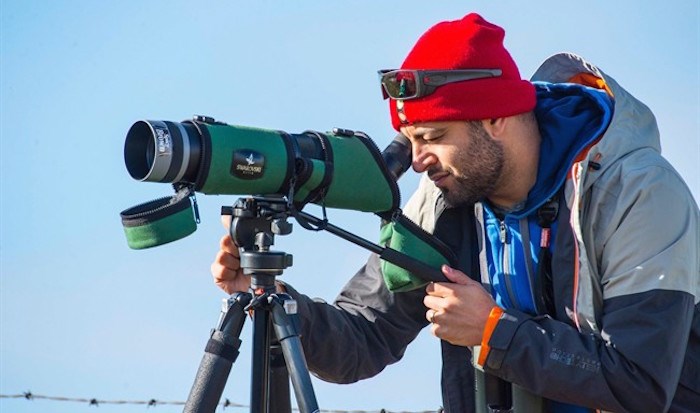Yousif Attia wasn't exactly a typical teenager. He had always been fascinated by birds, and he wanted to participate in a local Christmas bird count — an annual event where people across North America note the number of fowl in the Western hemisphere.
 Yousif Attia, 35, is shown in this undated handout photo. Yousif Attia wasn’t exactly a typical teenager. He had always been fascinated by birds, and he wanted to participate in a local Christmas bird count — an annual event where people across North America note the number of fowl in the Western hemisphere. No one at his Calgary high school shared quite the same passion for ornithology, but fortunately it was the late 1990s and local birdwatching groups were just a few clicks away on the internet. Attia found his community. THE CANADIAN PRESS/HO – Yousif Attia
Yousif Attia, 35, is shown in this undated handout photo. Yousif Attia wasn’t exactly a typical teenager. He had always been fascinated by birds, and he wanted to participate in a local Christmas bird count — an annual event where people across North America note the number of fowl in the Western hemisphere. No one at his Calgary high school shared quite the same passion for ornithology, but fortunately it was the late 1990s and local birdwatching groups were just a few clicks away on the internet. Attia found his community. THE CANADIAN PRESS/HO – Yousif Attia
No one at his Calgary high school shared quite the same passion for ornithology, but fortunately it was the late 1990s and local birdwatching groups were just a few clicks away on the internet. Attia found his community.
"I found a mentor who kind of took me under his wing, as far as driving me around and taking me on Christmas bird counts with him and then encouraging me to lead walks myself," said Attia, now a 35-year-old tour guide. "It kind of took off from there."
More young people like Attia are flocking to birdwatching than ever, aided by the internet, social media and digital photography, avian enthusiasts say. While previous generations had to dust off old bird books at the library, millennials have easier access to information and like-minded individuals than ever before.
Attia is among the thousands of people who have descended upon Â鶹´«Ã½Ó³»this week for the International Ornithological Congress, a global gathering of highly respected bird scientists held every four years. It is the first time the sought-after event has been staged in Canada since the 1980s, and convener Robert Elner pushed to bring it to British Columbia.
"It's a sense of incredible pride, not for myself but for Canada to actually host this. This is a real big endorsement of Canadian science and basically Canadian culture," said Elner, a scientist emeritus with Environment Canada.
Organizers partnered with the inaugural Â鶹´«Ã½Ó³»International Bird Festival, which is also being held this week and features such millennial-friendly events as fowl-themed improv comedy, a laid-back nature walk dubbed "Return of the Hipster Birder," and bird-inspired outdoor yoga.
Festival chairman Rob Butler has observed the demographics of birdwatching change.
"It used to be the purview of generally retired people, but it's really becoming much younger. The average age is now in the high 40s, early 50s, because the people have a bit of money and can travel," he said. "But it's coming down."
Travellers who are entirely focused on seeing rare birds are relatively few, while most want a broader cultural experience that involves birds, said Butler.
That's why the festival is "all about connecting you to culture through birds," he said.
Cam Gillies, owner of Eagle-Eye Tours, which facilitates guided bird tours in dozens of countries, said most of his clients want a tour that features some birds but also includes other animals and natural wonders.
More people in their 30s are signing up for his tours than ever, Gillies said, driven by the rise of digital photography and websites like Instagram and Facebook.
"You can fill the frame with some beautiful bird, which normally would have taken thousands of dollars of camera equipment and a really big lens to achieve," he said. "People are now able to capture those images and share them on social media."
Some millennials are pushing the artistic limits of bird fandom even further. Hillary Esdaile, 33, and Jennifer Miller, 36, are artists and birdwatchers who have created full, lifelike avian costumes, which they wore to the opening ceremony of the congress on Monday.
Miller said her elaborate costume depicting a bearded vulture — a near-threatened bird of prey — is a fun way to spark conversations about protecting wildlife.
"I really like being able to engage with people. They might not know about the species that I'm costuming as," she said. "To let people learn about this bird through this interactive costume has been very rewarding to me."
— Follow @ellekane on Twitter.
![]()


